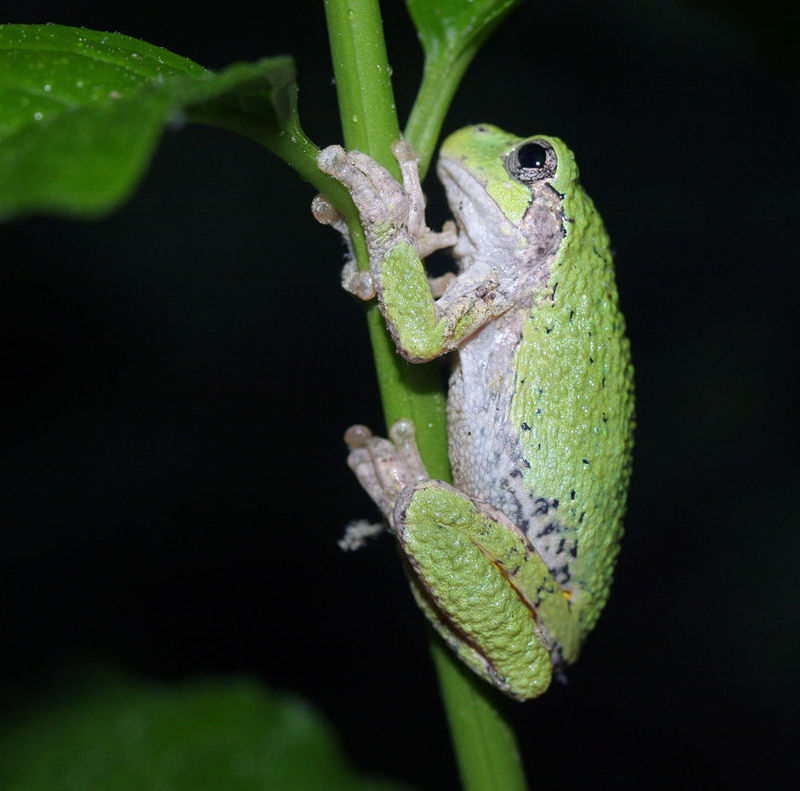Caring For Stray Frogs in the Winter
Every winter, frog lovers around the world write to us about stray frogs that wander inside. Last week a man from Maryland wrote about finding a grey tree frog.
Dear Susan,
“I found a gray tree frog hopping around inside our gym here in Maryland. I guess he was drawn inside by the heat. Well, I took him home and have him in a fish tank with water, crickets and artificial leaves for shelter. I’ve got a heating pad that sticks to the back of the tank. I was wondering how cold I could keep my home and still have the frog be ok?” – Gianni
For those of you not familiar with grey tree frogs, here’s some information and to read more, a page on Wikipedia:
The gray tree frog (Hyla versicolor) is a species of small arboreal frog native to much of the eastern United States and southeastern Canada.[2]
As the scientific name implies, gray tree frogs are variable in color owing to their ability to camouflage themselves from gray to green, depending on the substrate where they are sitting. The degree of mottling varies.[3] They can change from nearly black to nearly white. They change color at a slower rate than a chameleon. The female does not croak and has a white throat; however, the male does croak and has a black/gray throat. The female is usually larger than the male.
The gray tree frog is capable of surviving freezing of their internal body fluids to temperatures as low as -8 °C.[9]
https://en.wikipedia.org/wiki/Gray_tree_frog
When we find stray frogs who haven’t found a place to hibernate, it’s usually because we continue to build within the areas of their habitat, and they may get lost or confused. Going inside where the heat is on shows that this frog is trying to survive through the winter. It’s wonderful when people care enough to help them.
We’ve found a great site with tips on how to care for frogs and get them through the colder months, so they’ll be healthy and ready to go back outside come spring.
How to Take Care of a Pet Frog
Here are two of our previous posts that help explain what happens to frogs in the winter:
Winter is Coming: How Do Frogs Avoid Freezing
and
How Frogs and Toads Adapt To Winter’s Chill




